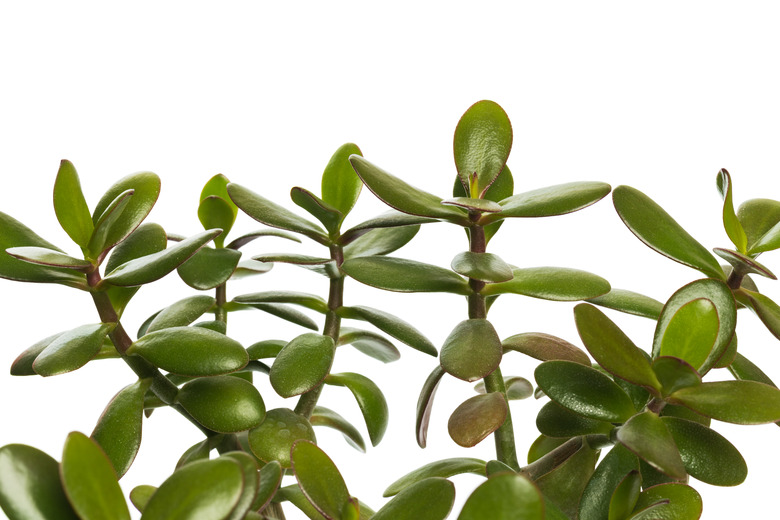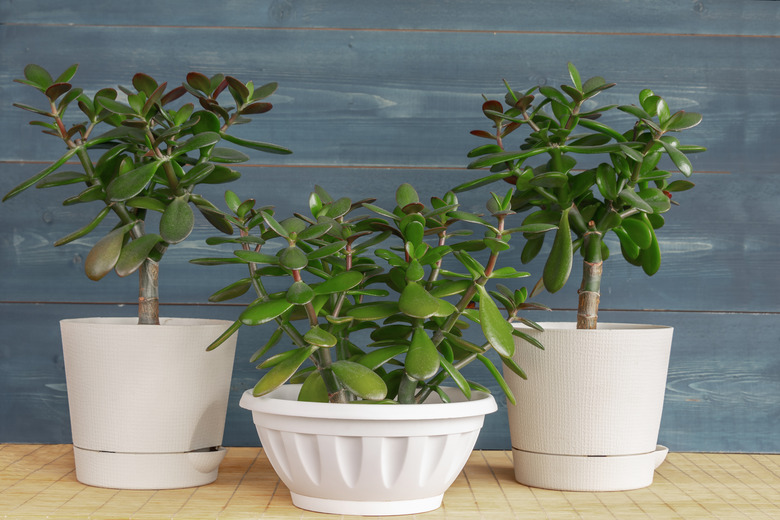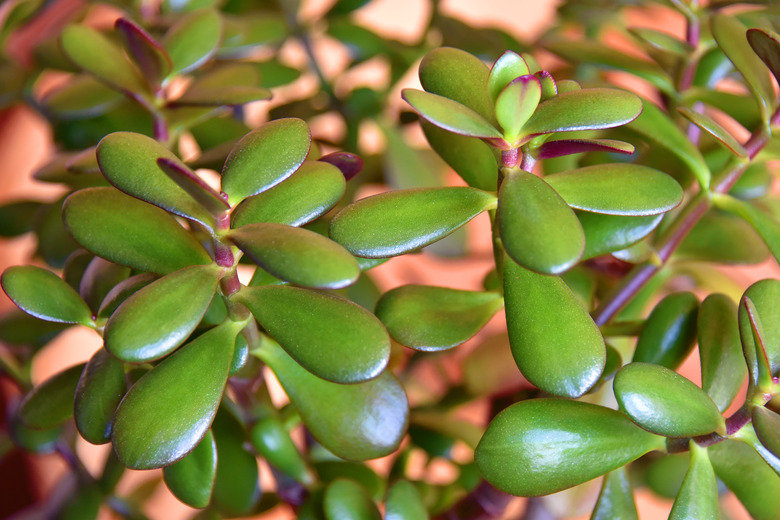How And When To Prune Jade Plants
A potted jade plant, also known as Crassula ovata, is favored by gift-givers for both its resilience and its longevity. Whether in potted form or planted outdoors in a warm, dry climate, this South African succulent seldom requires pruning. For those that want to prune a jade, however, it is fairly easy to coax into an attractive shape. This also makes the jade, or money plant, an excellent candidate for bonsai tree forms.
When to Prune Jade
When to Prune Jade
Spring and early summer months are the ideal time to prune a jade plant, as this is the plant's active growing season. It's easier for a jade plant to form a callus over each cut area during these warm months, recovering with relative ease.
If pruning to remove damaged portions of the plant, feel free to do so as needed at any time, as this also helps prevent diseases and insect infestations. No matter what the season, the plant recovers best when no more than 25 to 30 percent is lopped off at a time. If removing quite a bit of the plant at once, wait a few weeks or even longer before additional pruning to ensure the plant has recovered.
Where to Prune Jade
Where to Prune Jade
As with many other plant varieties, the best place to prune a jade is just above a _leaf node—_the visible spot where new growth typically branches off from a stem. If the stem has no leaves or nodes below the area you wish to cut, trim the stem to just above where it joins another branch or stem. This minimizes damage to the plant and helps ensure the intact stem stays healthy.
The perfect tool for pruning jade is mostly a matter of personal preference, given the thickness of the stems being pruned. For a thin, small houseplant, a sharp pocketknife or garden scissors will do the trick. For thicker stems, choose hand bypass pruners. No matter which cutting tool you use, make sure it's sharp. Wipe the tool blades down with rubbing alcohol or alcohol-based hand sanitizer before cutting to sanitize the tool.
Selective Jade Pruning
Selective Jade Pruning
A jade plant can be pruned to maintain or encourage specific shapes, even a bonsai-style tree. A jade that doesn't receive enough sunlight, whether indoors or out, can develop long, spindly stems that make the plant top-heavy. Pruning it down a bit can encourage a thicker, sturdier main stem and new offshoot growth.
Cut off a portion of the tall, thin stem with sharp, clean pruning shears, cutting to just above a leaf node or sets of leaves on the spindly stem. Save the cutting to start a new jade once the cut has healed. The stem of the main jade will also heal itself and may drop some of its leaves. Not to worry; new branches or leaves will form from the spots that once contained leaves.
- Note: unless the plant is placed in an area where it can receive more sunlight, it will eventually become leggy again. If it is a garden plant, trim back some of the other nearby plants to allow more sunlight to reach the jade.
To prune and train a jade plant to take on a tree-like form, start with a spindly yet fairly straight stem that has a lot of leaves. Snip off most of the leaves and pinch off the top of the plant to encourage new growth. New, smaller leaves will form where larger leaves have been removed. Since a jade grows slowly, it can take quite a while to achieve the desired look.
Pruning for Propagation
Pruning for Propagation
Jade plants are fairly easy to propagate with stem or leaf cuttings. If you're using a stem, cut a segment that's at least 3 inches long, pruning to just above where it joins another stem or shows signs of new leaves or nodes.
Allow the cutting to dry out in a non-humid area for a few days to two weeks, depending upon the thickness of the stem. The cutting is ready when the cut area has completely healed over, no longer looking like a fresh cut.
Dip the callused cutting into rooting powder, if desired, then place it in a small, shallow pot full of a succulent potting mix. Set the pot in an area that receives a fair amount of sunlight. Don't water the cutting until it has rooted itself, which could take a couple weeks. If unsure about the root situation, wiggle the cutting gently. If it has rooted, it should stay put.
To root a leaf after it has sat out for a couple days, position it horizontally atop the potting mix, burying the cut edge just slightly under the soil. It will start rooting itself within a couple of weeks.



